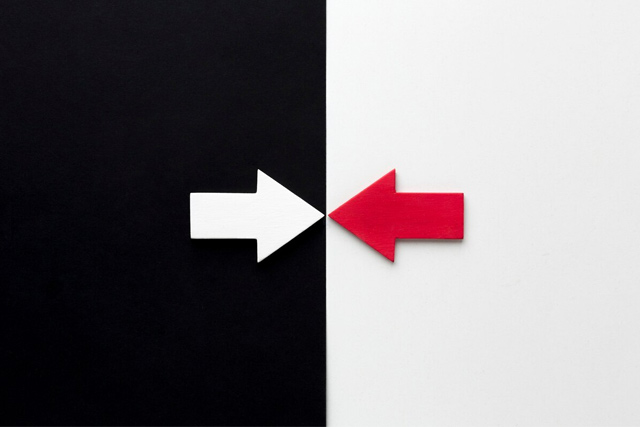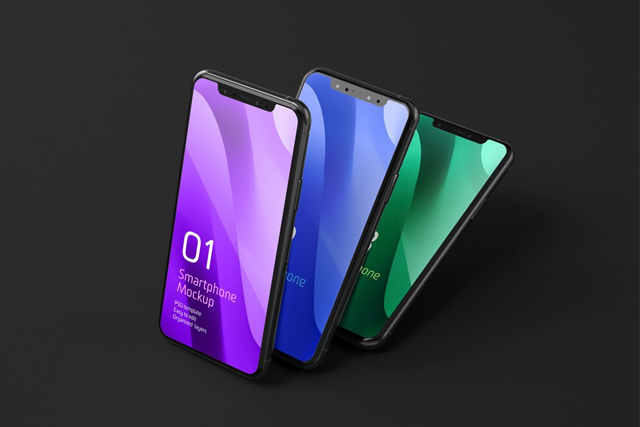What Does 5G “UC” Mean: 5G “UC” is the fifth generation of mobile networks and technologies. It’s an evolution in connecting to Wi-Fi, making calls, streaming music, and more. With 5G “UC,” you can experience faster speeds and improved call quality by using cellular data instead of Wi-Fi in connected and remote areas. 5G “UC” is built to deliver high-performance connectivity and support various applications ranging from virtual reality to self-driving cars.
5G “Ultra Capacity” allows faster download speeds than 4G LTE networks. This 5G “Ultra Capacity” (“UC”) lets you enjoy the best of 5G and “beyond.” You’ll get faster speeds at home, on the go, and even in the air, with everything from mobile speed to high-end networks for HD video calling. The real benefit comes when you combine 5G with our other advanced technologies to create an even more advanced wireless experience.
What Is The Meaning of 5G “UC”?

The 5G “UC” is T-Mobile’s version of 5G, called “Ultra Capacity”. The 5G “UC” includes the high-speed 5G band but depends on the mid-band range, which provides 2.5 GHz. In such a situation, you will see the 5G “UC” icon on your mobile phone if you are within range of any tower. Thus, the 5G “UC” icon indicates you are connected to a 5G network. If you have a 5G support iPhone and Android mobile phone, you will see this 5G “UC” icon, and if you do not have a 5G support mobile phone, you will not be able to see the 5G “UC” icon.
If the 5G “UC” icon appears on your mobile phone, it means that your mobile phone is communicating on the fastest mmWave or mid-band frequencies.
From the beginning of 2022, only the iPhone 13 supported 5G, and now the iPhone 14 and 15 also support 5G. Specifically, this 5G “UC” icon appears only if you are connected to the T-Mobile “Ultra Capacity” 5G network; otherwise, it does not appear. Therefore, the 5G “UC” icon first appeared on the iPhone between September 2021 and mid-2022 and appears on selected Android phones.
What Is 5G “Ultra Capacity”?
5G networks are more complex than you might think, and different 5G networks offer different speeds. Thus, T-Mobile divides its 5G network into two types of 5G. The first is 5G “Extended Range,” and the second is 5G “Ultra Capacity.” However, the 5G “Extended Range” network will be nearly as fast as 4G LTE and provide service to most of the country, including many less developed rural areas. On the other hand, a 5G “Ultra Capacity” Network is a faster 5G network that promises to exceed 4G LTE speeds.
Difference between 5G “Ultra Capacity” and 5G “Extended Range”. First, the 5G “UC” network, you’ll see the 5G “UC” icon when you’re connected to T-Mobile’s faster 5G network. On the other hand, if you’re connected to T-Mobile’s slower 5G “Extended Range” network, you’ll only see the 5G icon.
Technically, when you see the 5G “UC” icon, you are connected to a mid-band or millimeter wave (mmWave) 5G network. For T-Mobile, you are likely connected to the mid-band 5G network because it’s a big part of T-Mobile’s fast 5G network. Thus, the standard “5G” icon without “UC” means you are using a low-band 5G network.
Cellular Network Providers In 5G “UC”
However, not all 5G connections are as fast as each other, and 5G “UC” networks offer faster speeds than regular 5G connections. For instance, the 5G cellular network is available in various bands, including mmWave, low-band, and mid-band connections. For example, T-Mobile provides 5G connections in the US, which are 5G “Extended Range” and 5G “Ultra Capacity.” And your mobile phone or tablet will display these as 5G XR for “Extended Range” and 5G “UC” for “Ultra Capacity.” The 5G “Extended Range” network is the lowest 5G network connection. It uses many of the same frequencies as 4G LTE, which provides similar speeds. So, to confuse things more, AT&T also called their LTE networks 5G E.
5G Network bands
If the 5G “UC” icon is displayed on your mobile phone, you can ensure that your mobile phone is connected to the fastest 5G cellular network. And if you are using the T-Mobile network connection, then it means you are connected to the company mmWave and mid-band. And it provides faster network speeds than its “Extended Range” network connection. Thus, 5G “Ultra Capacity” network connections operate at higher frequencies than older-generation network connections. As a result, it provides nearly 1 Gbps even in crowded areas.
Sadly, due to the increased network speeds and available capacities, the technology requires more investment from providers than cellular companies when 5G “UC” connects to the network. Usually, it is found only in the main cities. The 5G “UC” icon was shown on phones in September 2021. This shows on all the latest Android and iOS mobile phones, mainly if you use the latest Android mobile and iPhone 14 or higher.
What is the difference between 5G UC, 5G UW, and 5G+?

The 5G revolution is upon us, but that doesn’t mean you must choose between 5G speed and coverage. You can read our post to know the difference between 5G UC, 5G UW, and 5G+.
Verizon
5G UW: Verizon’s high-band and mid-band 5G networks are called “Ultra-Wideband.” Until recently, “UW” primarily meant high-band networks, also known as mmWave. Verizon made significant efforts to develop and promote this network. However, the signal can be challenging even in some areas where it is available. Verizon was set to start lighting up new mid-band 5G spectrum in major cities in 2022 and organized it as “Ultra-Wideband.” This is not surprising at all.
If the 5G UW icon appears on your mobile phone, you are on the mid-band 5G network. Even, if you are on mmWave, you will see a massive difference in Data Speeds. But, if your data looks notably fast but not insanely fast, you’re likely on mid-band.
5G Nationwide: Verizon’s 5G nationwide refers to the company’s low-band 5G network. You are connected to this network if you see only a 5G icon without “UW” on your mobile phone. And if your reaction to seeing the 5G icon pop up is something like, “Huh, that doesn’t sound faster than 4G,” you’re not alone. It’s generally not much faster than 4G LTE. Some Verizon plans, such as its basic 5G Start Unlimited plan, only offer the low-band version of 5G.
AT&T
5G Plus: If you see the 5G+ icon on your mobile phone, you’re connected to AT&T’s high-band or mid-band spectrum. AT&T has made little effort to build a high-band network outside stadiums and airport terminals. So you are unlikely to know about it. The mid-band AT&T spectrum was also shrunk by early 2022 because the carrier attempted to “kill two birds with one stone” with its mid-band expansion. A 5G icon without a “plus” indicates the carrier’s low-band 5G network, which isn’t faster than LTE.
5G E: AT&T got creative a few years ago; before any significant 5G network was developed in the US, it started branding some of its 4G LTE as “5G Evolution.” It’s not 5G; an advertising review board asked the company to discontinue it. The icon still appears on the phone, but please ignore it because you are on 4G.
T-Mobile
5G UC: T-Mobile’s 5G “Ultra Capacity” network includes the high-band 5G network. But most network and T-Mobile ads focus on the mid-band range included in the name. Meanwhile, Verizon and AT&T cellular networks are establishing their mid-band networks. So, T-Mobile started with 2.5 GHz of mid-band spectrum when it acquired Sprint. If you see the 5G “UC” icon on your mobile phone, you can be sure that’s the high-band 5G network spectrum to which you’re connected.
Extended Range: T-Mobile 5G “Extended Range” Network: A 5G icon without “UC” on your mobile phone indicates you are connected to a low-band 5G network. So again, we are saying it’s not faster than the LTE network. However, the LTE network coverage is far more extensive than the mid-band or high-band 5G network. So, if you see 5G on your screen and are not impressed with the speed, this could be a reason.
Which Smartphones on T-Mobile’s Network Support 5G “UC”?

Considering the increasing prevalence of 5G, many 5G smartphones are available in both iPhone and Android categories. The T-Mobile website lists many models compatible with its 5G network. The iPhone mobile categories include the iPhone 12 and iPhone 13 series. It means iPhone 12 Mini, iPhone 12, iPhone 12 Pro, and iPhone 12 Pro Max, and iPhone 13 mini, iPhone 13, iPhone 13 Pro, and iPhone 13 Pro Max all support 5G. The iPhone SE 3, launched recently this year, is also 5G network compatible.
The S22 series includes the Galaxy S22, S22+, and S22 Ultra and is the only Android phone supporting 5G. The S21 series, Galaxy Z Flip 3, Galaxy Z Flip 4, Galaxy Z Fold 3, and Galaxy Z Fold 4. The earlier Galaxy Note 20 Ultra is also listed. Some mid-range Samsung phones also support 5G, including the Galaxy A52, Galaxy A53, Galaxy A32, Galaxy A13, and Galaxy A71. Pixel devices that support 5G include the Pixel 4a, the Pixel 5 series, and the Pixel 6 series. Customers looking to upgrade to 5G on T-Mobile can also consider devices from OnePlus and Motorola.
Will 5G “UC,” 5G+, and 5G “UW” Logos Appear Outside the USA?

The 5G logo indicates the carrier has announced support for 5G networks. Apple’s official website explains some terms like 5G “UC,” 5G+, and 5G “UW” without clarifying them about specific carriers. You can also see these logos on other cellular carriers outside the USA. However, if you see only the 5G logo, then it does not mean you are using slower, low-band 5G. Your cellular carrier may not display such branding.
Conclusion
The 5G “UC” network is designed to deliver faster download speeds of 100 Mbps and upload speeds of 1 Gbps. You’ll get a better internet experience in a big city or built-up area. This means that you will get access to higher and faster 5G “UC” network speeds. But, looking at the 5G XR network means you are facing lower network speed. And with 5G XR network speeds, you’ll see fewer hotspots and less consistent coverage because it provides almost the same speed as the old 4G LTE network connection.